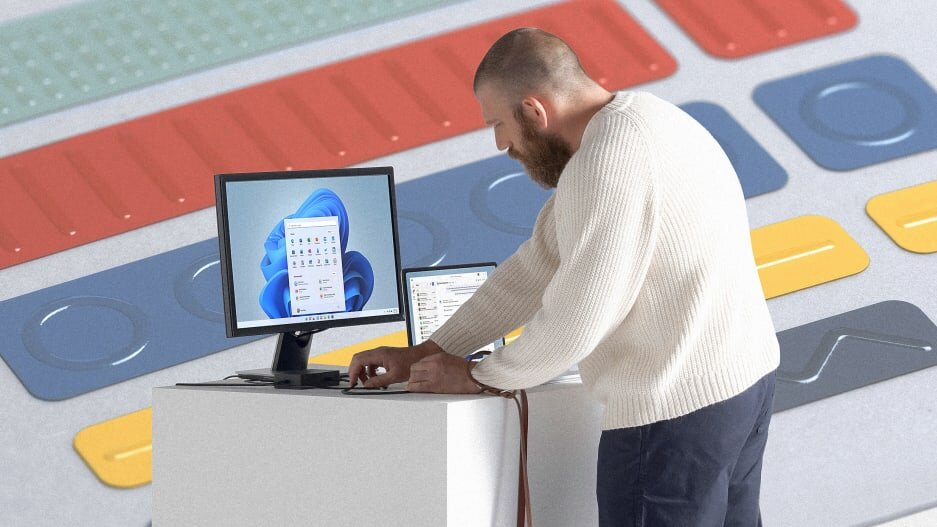
How Technology Brings Blind People into the Workplace
In these days of low unemployment, many corporate and other organizations find it necessary to track the whereabouts and profiles of underused sectors of the labor pool.

What We Can Learn From Companies That Hire Workers With Autism
Here's what we can learn by drawing on the power of different brains.

Disability Etiquette
People who have never interacted with a person who has a mental or physical disability may think of the exchange as intimidating or nerve-wracking.

The Autistic Workforce Is Here. Are You Prepared?
If you are a large employer, you already have autistic employees, whether you know it or not. Some employers recognize the potential of this untapped workforce and have implemented autism hiring programs as part of their diversity and inclusion efforts.

Why Hire Disabled Workers? 4 Powerful (and Inclusive) Companies Answer
One theme we commonly hear when discussing disability (or any minority) employment is that it is the right thing to do. However, from the perspective of businesses that perpetuate discrimination in their hiring and retention of workers with disabilities, this message doesn’t seem to be enough.

Disability Etiquette: How to Respect People with Disabilities
People who have never interacted with a person who has a mental or physical disability may think of the exchange as intimidating or nerve-wracking.

Reminder: Disabled Job Candidates Are Entitled to the Same Accommodations as Employees
If you have a hunch one of your employment practices might violate the law, follow your gut.

These Microsoft Stickers Make Computers Easier To Use for People With Disabilities
Making a Microsoft Surface work better for everyone can be as easy as adding some stickers.


Understanding invisible disabilities in the workplace
Not all disabilities are obvious to the eye.

Why More Tech Companies Should Hire People With Disabilities
It's an aspect of diversity that's not often talked about in Silicon Valley, and one that can generate better returns for your business.

Autism Awareness: Six Steps For Greater Inclusion In The Workplace
Imagine you have an employee who excels at pattern recognition, thinks “outside of the box” and has extreme attention to detail. Yet, they might not enjoy making eye contact or be the best at reading social cues.

4 reasons why hiring disabled workers is good for business
The pandemic has hit the disabilities community particularly hard. This founder of a startup that makes software more accessible warns that’s a major loss for your innovation.

The 5 Superpowers People With ADHD Can Use to Be Better Entrepreneurs
We wanted to showcase some traits found in people with this condition, and how they can use them to their advantage when running a business.

How to Make the Workplace More Inclusive for People with Disabilities
According to the Centers for Disease Control and Prevention, 1 in 4 American adults (about 81 million) are living with some type of disability.

Employer Bias Thwarts Many Blind Workers
Technology and training have improved to the point that blind people can adeptly perform a dazzling array of jobs--soon to include the governorship of New York. The biggest obstacle still in their way, advocates say, is the negative attitude of many employers.

Tips for handling your employees’ invisible disabilities
Discussing any disability at work can be tricky, and educating coworkers, supervisors, and employers on this topic is challenging, but crucial. The tips below can help you handle your employees’ non-visible disabilities with tact and compassion, and can help you understand when accommodation under the ADA may be necessary.

How To Make Workplaces More Welcoming For Employees With Disabilities
Beyond good intentions and the administrative competence to be “ADA compliant,” there are informal ways employers can help make workplaces more inviting and productive for current and future employees with disabilities.

Pioneers in the fight for disability rights
It is commonly held that the inception of the modern US disability rights movement occurred amidst the social upheavals of the 1960s and 1970s. Specifically, two major developments figure prominently in this narrative.

Disability is the missing piece in the DEI puzzle
Disability:IN is helping companies hire more people with disabilities while expanding the global conversation around diversity, equity, and inclusion

